This 2.35 ha property at Doolbi near Childers has been owned by my family for 108 years with habitat rehabilitation starting in 1976. The habitat is now 40 years old and fabulous.
Historically, the Kabi Kabi lived in this area, and the name Doolbi apparently refers to Burdekin Plum ( Pleiogynium timorense ).
In the 1870s, loggers felled the best logs and hauled these by bullock wagon to rafting grounds. In 1877, the Crown leased 40 ha with an obligation on the leaseholder to clear a farm. My habitat rehabilitation now occupies a corner of the original uncultivated farm paddock. It has fertile red soil and a small, seasonal spring-fed creek.
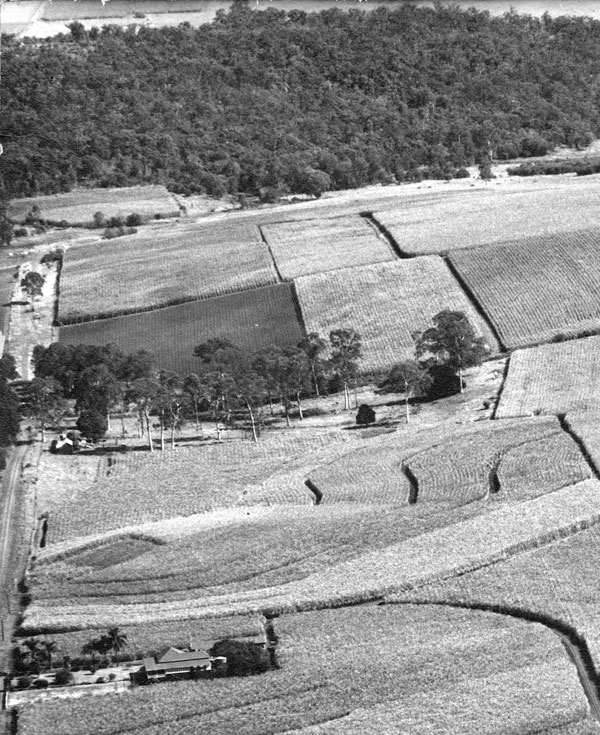
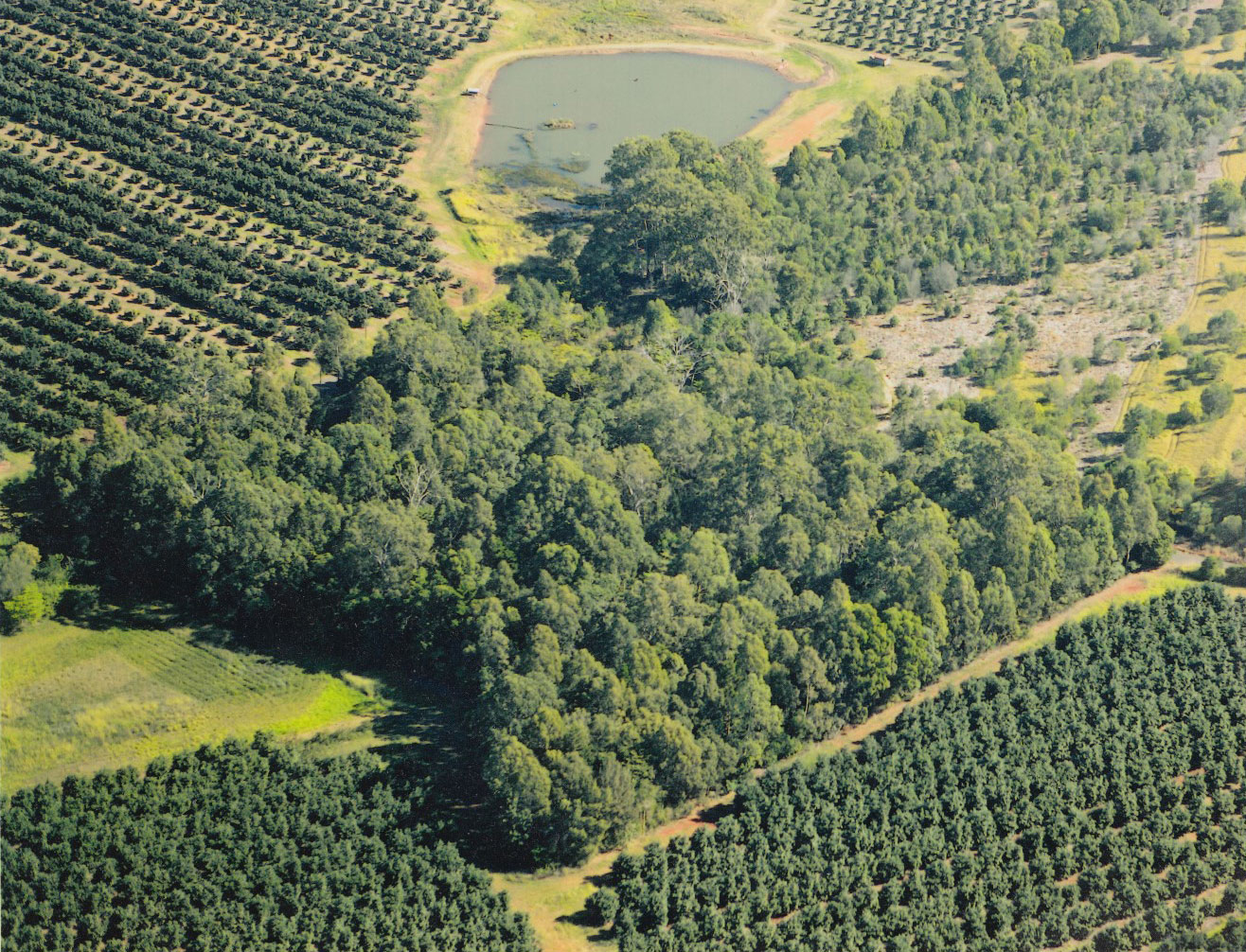
(Above:) A recent aerial photograph shows Ian’s property in the middle, now a forest of native vegetation, surrounded on three sides by avocado orchards. The trees to the top right are part of a corridor planting that Ian undertook in cooperation with his neighbour, connecting Ian’s property to the forested hill.
(Above Left:) Aerial photograph taken sometime between 1955 and 1960 shows Ian’s family’s old farmhouse in the foreground surrounded by sugar cane paddocks. In the background is a forested hill surrounded by sugar cane. The patch of large Queensland Blue Gum trees in the middle is now part of Ian’s property.
In 1908 my grandparents bought this property and in about 1916 they also bought the Childers sawmill. The mill burned down about ten years later and they didn’t rebuild because the Isis Scrub and eucalypt forests that once grew around Childers had been so widely cleared.
In 1931 my parents married and moved north to the Atherton Tablelands. For the first year they lived in a tent and their only income was from sale of logs that my father felled using his axe, cross-cut saw and steel wedges. Early in 1938 my parents returned to Doolbi, but in 1976, they decided to sell the farm and retire. By 1976 the paddock had been reduced to 2.35 ha in size but it still had some big trees especially Queensland Blue Gum ( Eucalyptus tereticornis ) and Small-leaved Fig ( Ficus obliqua ). My father valued these trees as shade for livestock and he enjoyed having noisy flocks of lorikeets overnight there and nest in tree hollows. In 1976 I bought the paddock from my parents to conserve the native vegetation on it – especially the big old trees. Shrubs such as Milky Bush ( Alstonia constricta ), Lolly Bush ( Clerodendrum floribundum ), Crows Apple ( Owenia venosa ) and Smell of the Bush ( Mallotus claoxyloides ) were present or on the roadside. Some natural regeneration of native plants was occurring.
“Nestboxes are very useful in revegetation projects. They can make a forest dominated by young trees into suitable habitat for cavity- nesting fauna.”
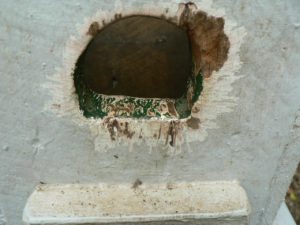
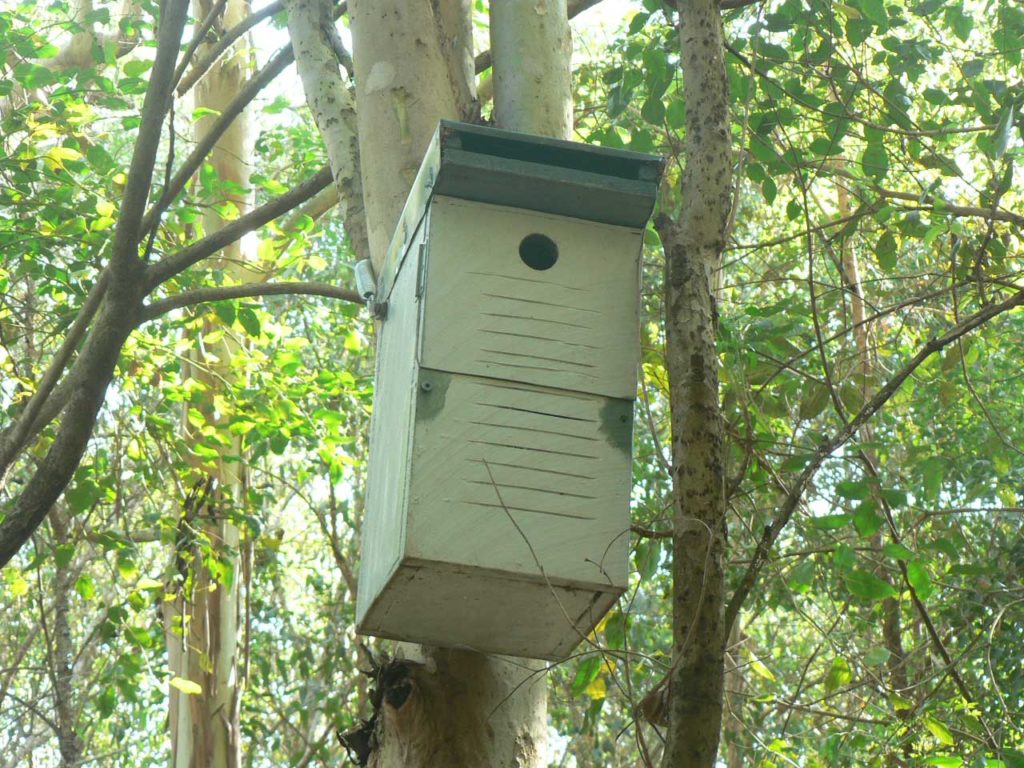
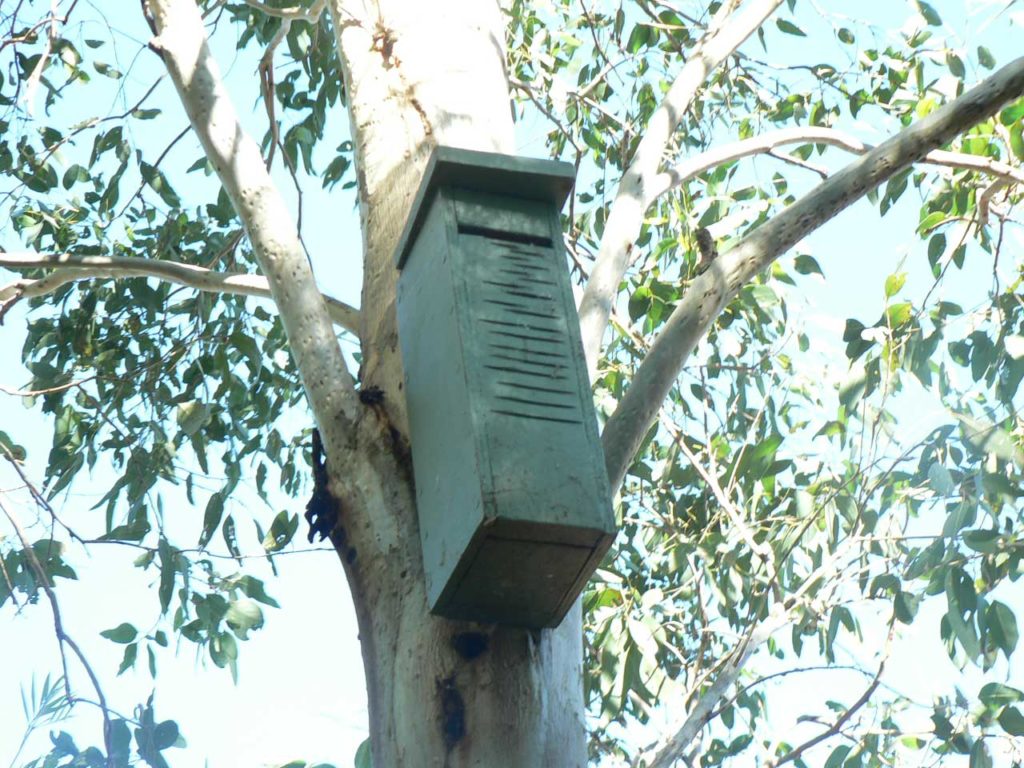
(Left:) A nestbox designed for Sugar Gliders. Note the coil spring on tree attachment. These are essential when fitting nest boxes to young, fast-growing trees. (Right:) A nestbox designed for Feathertail Gliders. These animals built a nest of eucalyptus leaves that filled this box.
My main aim in 1976 was to conserve the remnant trees as Queensland Blue Gums on fertile soils have been widely cleared. However, by 1982 I was working with the Commonwealth Government’s National Tree Program and one of my tasks was to chair the editorial committee that produced the book Think Trees Grow Trees published in 1985. Based on this experience, I broadened my aims for the 2.35 ha paddock and decided not just to conserve it, but to revegetate it with plant species native to the Childers region. This process would attract more native wildlife.
My aim has never been to restore the paddock’s vegetation to just what it was when Kabi Kabi people lived there, as there are uncertainties about what the site’s vegetation would have been in 1860. Thus, I decided to use plant species and communities of the region. I defined ‘the Childers region’ as extending south to Maryborough and Hervey Bay, north to Bundaberg, and west to Booyal and Biggenden.
My aim was to grow a collection of native species but also to establish plant communities – including rainforest, riparian forest, wet eucalypt forest and drier forest. To do this, I researched many native plant species of the Childers region and compiled this information in an electronic, searchable database. I have been working on this database for 34 years and it includes information on how different plant species performed on the Doolbi site.
To rehabilitate the paddock I used conservation, planting, natural regeneration and direct seeding. I bought seeds from the CSIRO, collected some local seeds, raised seedlings myself and also bought seedlings. Most of this was done from my home in Canberra and I would do planting and seed collecting when I visited Doolbi during my holidays. I planted trees, shrubs, vines and groundcovers as they all contribute to the food pyramid for wildlife.
Once some native plants were established on the site, I was surprised at the amount of natural regeneration, which reduced the need to plant. Fruit-eating fauna also carried in native seeds.
With the cooperation of a neighbour, I planted another 1 ha of forest on his land and also a 3-row shelterbelt of native trees to be a wildlife corridor connecting my land with remnant bushland about 300 m away. In 1999 I joined Land for Wildlife, and putting the program’s sign beside the road showed my identity as a person who did some environmental activity within society. I keep my Land for Wildlife magazines and re-read them for interest and for useful information and ideas.
In doing this habitat rehabilitation, a personal highlight for me was hearing the first call of a Brown Pigeon from forest on my land. This bird is mainly a fruit-eating rainforest species and its call showed rainforest was establishing. I was also excited the first time I heard a Rose- crowned Fruit Dove calling – another fruit- eating rainforest bird.
Also exhilarating was walking in the forest and seeing birds such as the Rufous Fantail and Black-faced Monarch which usually prefer dense vegetation. Birds such as these were not there back in 1982. Over the past 20 years I have observed a total of 129 bird species using the property in some way, and the most bird species observed in any week was 55 species.
This ongoing 40-year-long habitat rehabilitation project to conserve biodiversity on private land should be a valuable information resource for the Childers region. However, community response to this pioneering work has been very mixed including bewilderment, laughter, derision, anger, contempt and indifference. Many saw me and my ecosystem rehabilitation work as a waste of time and even a joke. Others wanted me to leave town. On a positive note, Bundaberg Regional Council awarded me their Green Spirit of the Year Award in 2013, and I have learnt to value and appreciate people who realised what I was doing.
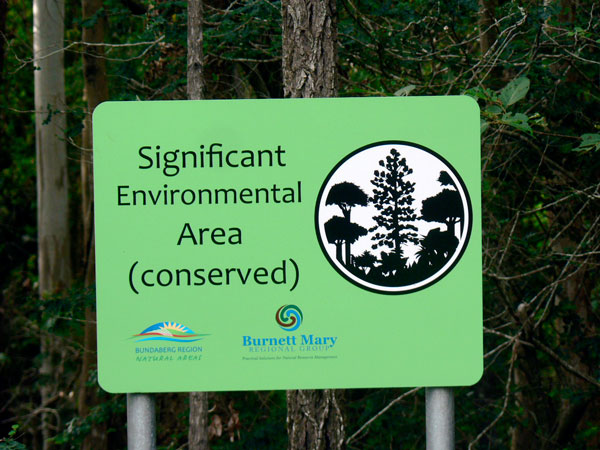
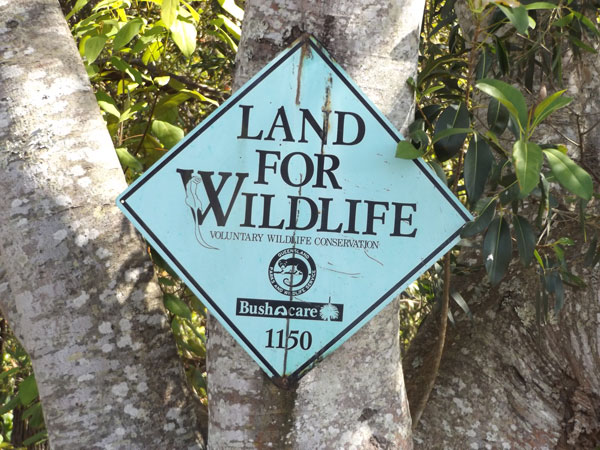
In addition to Land for Wildlife, Ian’s property is conserved by a covenant on title under the Queensland Vegetation Management Act (1999) as indicated by the Significant Environmental Area sign.
Critics often targeted my character and personal identity, but few of them had ever visited my land, and very few knew what ecosystem restoration was, or what I did. I was mystified that people who knew so little about an ecosystem restoration could oppose it so strongly. I finally realised they were actually describing their own personal beliefs, rather than my land.
Many regions lack a ‘critical mass’ of long- term ecosystem rehabilitation projects done on private land to conserve biodiversity. This lack can affect people’s beliefs. Ongoing communication with individuals and the public then becomes a key part of ecosystem restoration. I believe that programs such as Land for Wildlife can help this communication process.
Article and photos by Ian Gorrie Land for Wildlife member Doolbi, near Childers

Hello
We have been trying to get in contact with Ian , my husband ( Sean) used to work with him on his land. We have lost contact and would like to catch up. If anyone knows his where abouts that would be wonderful
Thank you for sharing your story. This is inspiring work. We have purchased a 1 hectare block of mostly cleared land in nearby Buxton and I came across this article while looking for information on what to native plants to plant there. While we won’t be able to do something quite as impressive as this, I hope to replicate it to a degree.